Yorba is an online service that helps you track your accounts on various platforms, manage subscriptions, and respond promptly to data breaches.
How many websites are you registered on? How many newsletters are you subscribed to? And how much do you pay for subscriptions? Answering these questions isn't that simple, but it can be attempted with the help of special services.
What is Yorba?
Yorba is an online service that helps you track your accounts on various platforms, manage subscriptions, and respond promptly to data breaches.
Of course, some of these features are available in password managers, but they cannot, for example, independently find your accounts.
How Account Search Works
To register for the service, you'll need to provide a login and password, and then, during the first authorization, specify the type of email: work or personal. The point is that in Yorba, you can store data for all your email addresses, making it more convenient to separate them in the future.
After that, the service will automatically, with your assistance, search for registered accounts associated with the provided email address. To do this, you'll need to complete a small checklist.

At each step of this checklist, Yorba will conduct the corresponding data search and, if necessary, request additional information from you. For example, when searching for your accounts, you may need to provide other email addresses.
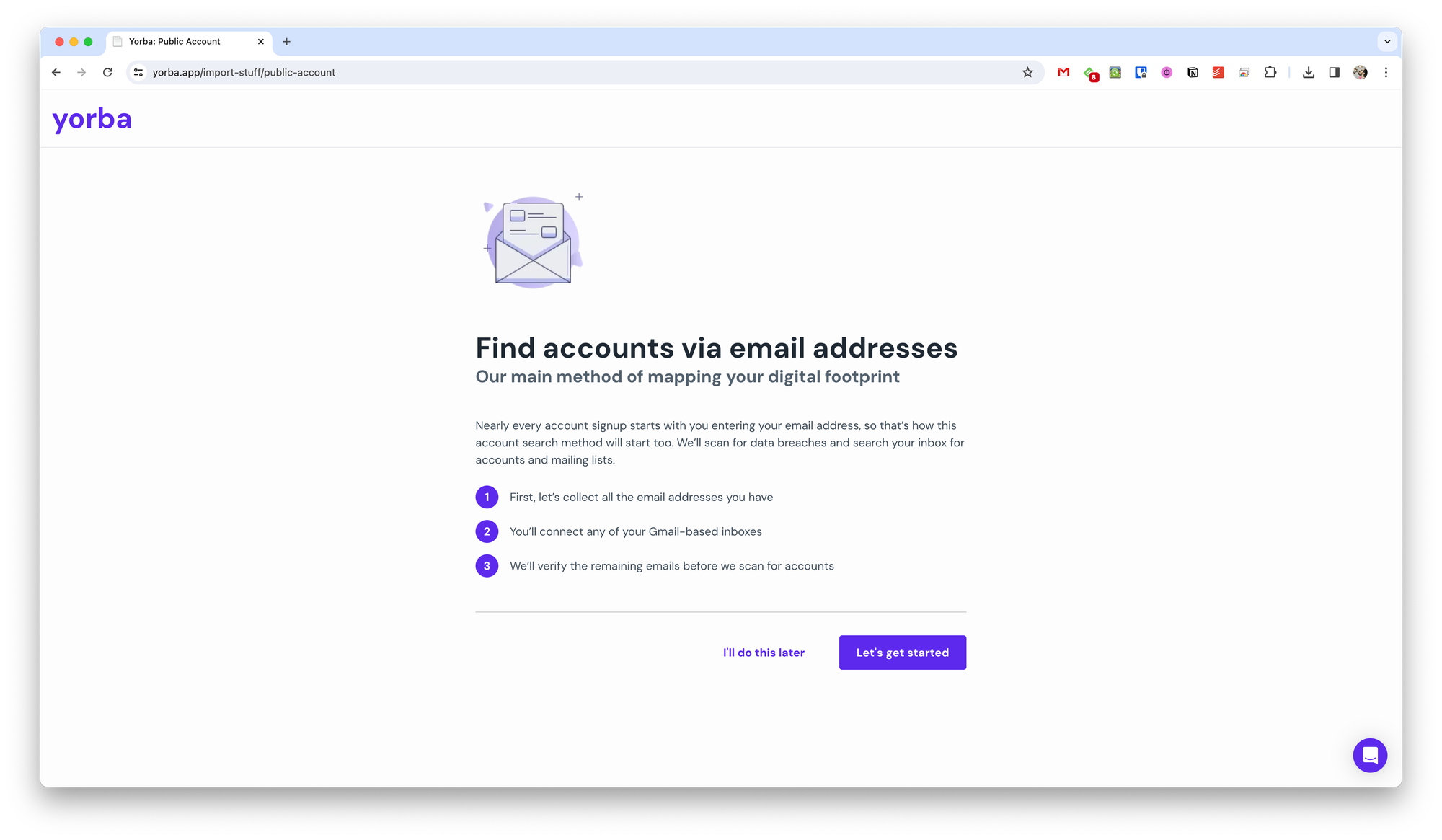
However, proper integration is provided for Gmail accounts. In this case, the service can scan your email and find information about subscriptions, newsletters, and registrations.
There are three ways to search for your accounts: by email address, from data from password managers, and through card transactions (only works for the USA). The search itself can take up to 24 hours, so after starting, it's worth waiting before continuing to use the service.
I should note that manual search initiation will not be required in the future. The service automatically scans data and adds new information as needed.
What to Do with the Received Data
After the scanning is complete, you have four main tabs to work with Yorba. If you have just finished scanning, I suggest starting with the Accounts tab.
Here you can check the data obtained during automatic search and confirm that it is indeed yours. Only after that will they be added to the service, and you can continue working with them.
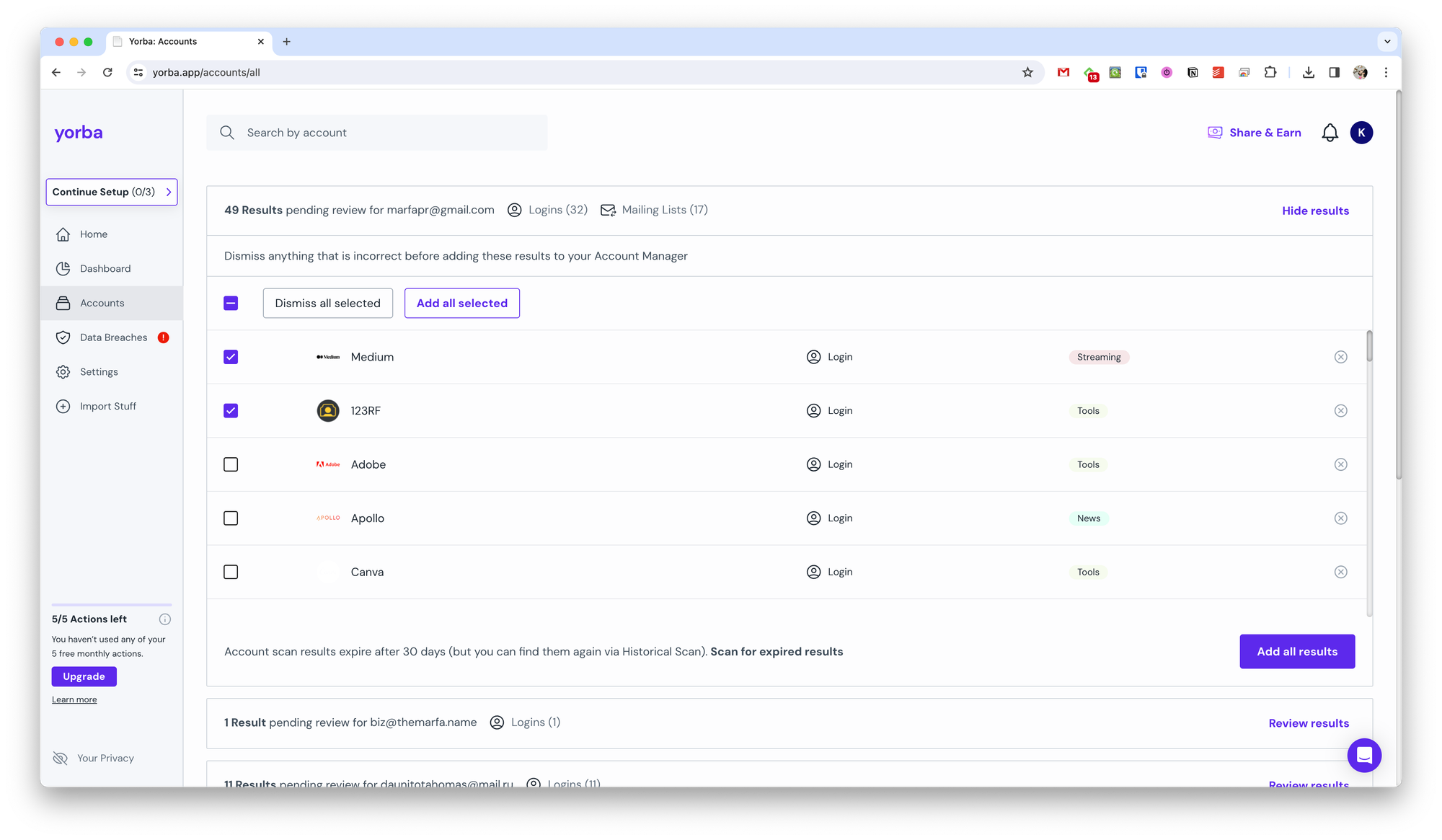
Each account is displayed with its type: authentication data, email subscriptions, or something else. As well as what it relates to: purchases, streaming, and more.
After that, they will be added to the general list of accounts with the ability to filter by the types mentioned above. From here, you can also visit the account's website or view brief information about it. If necessary, service data can be edited.

If you have enabled subscription tracking, you can immediately see in a separate filter how much you pay for each of the services and how often, and then proceed to unsubscribe. Similarly, you can quickly unsubscribe from email newsletters.
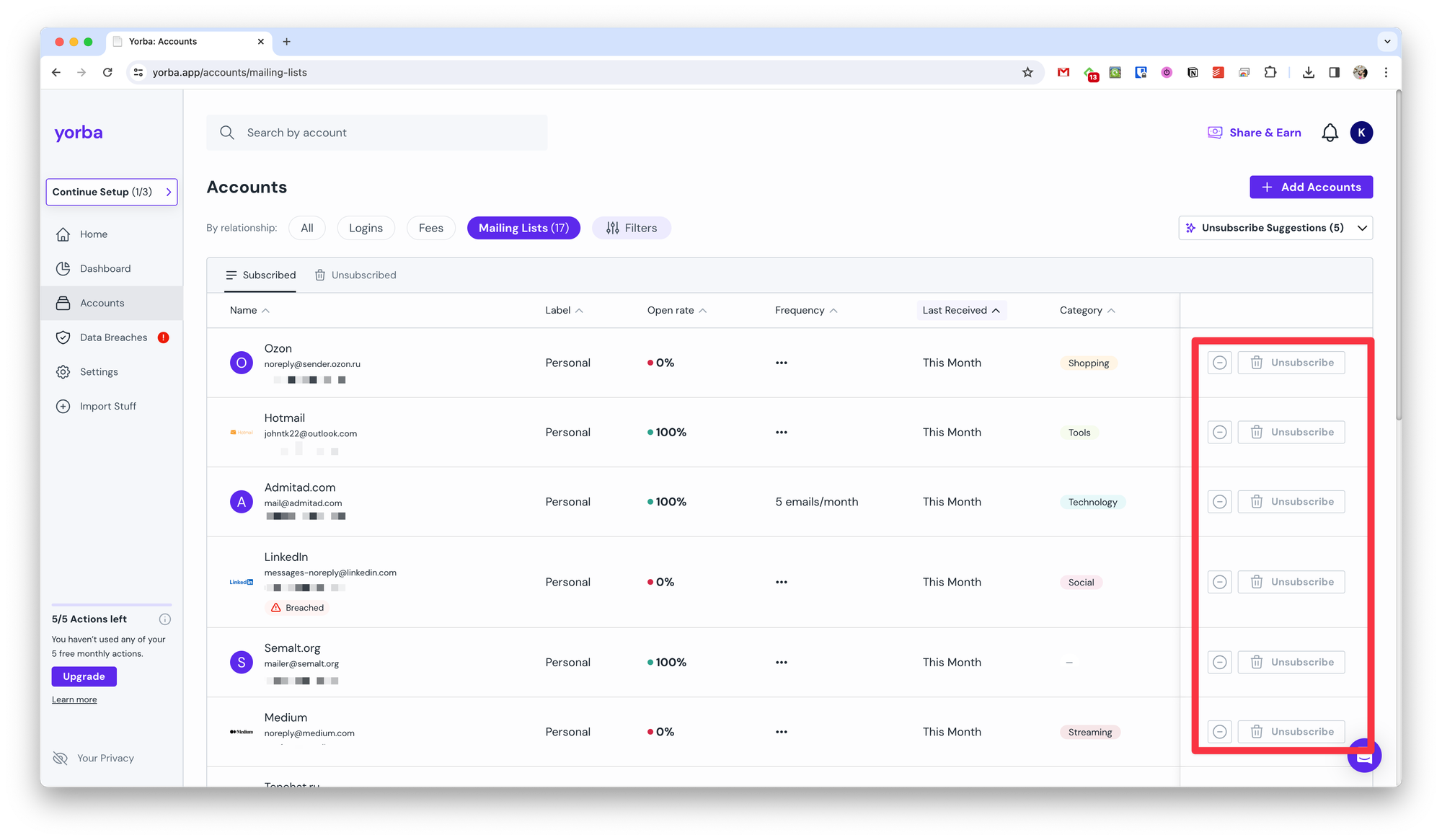
On the Home tab, you can see summary information about all your accounts. How many were detected this month, how many in total, how many email newsletters, leaks, and more.

The Dashboard tab largely duplicates the capabilities of the previous one, but here you can see the breakdown of accounts by type, see upcoming subscriptions, and statistics on email newsletters.
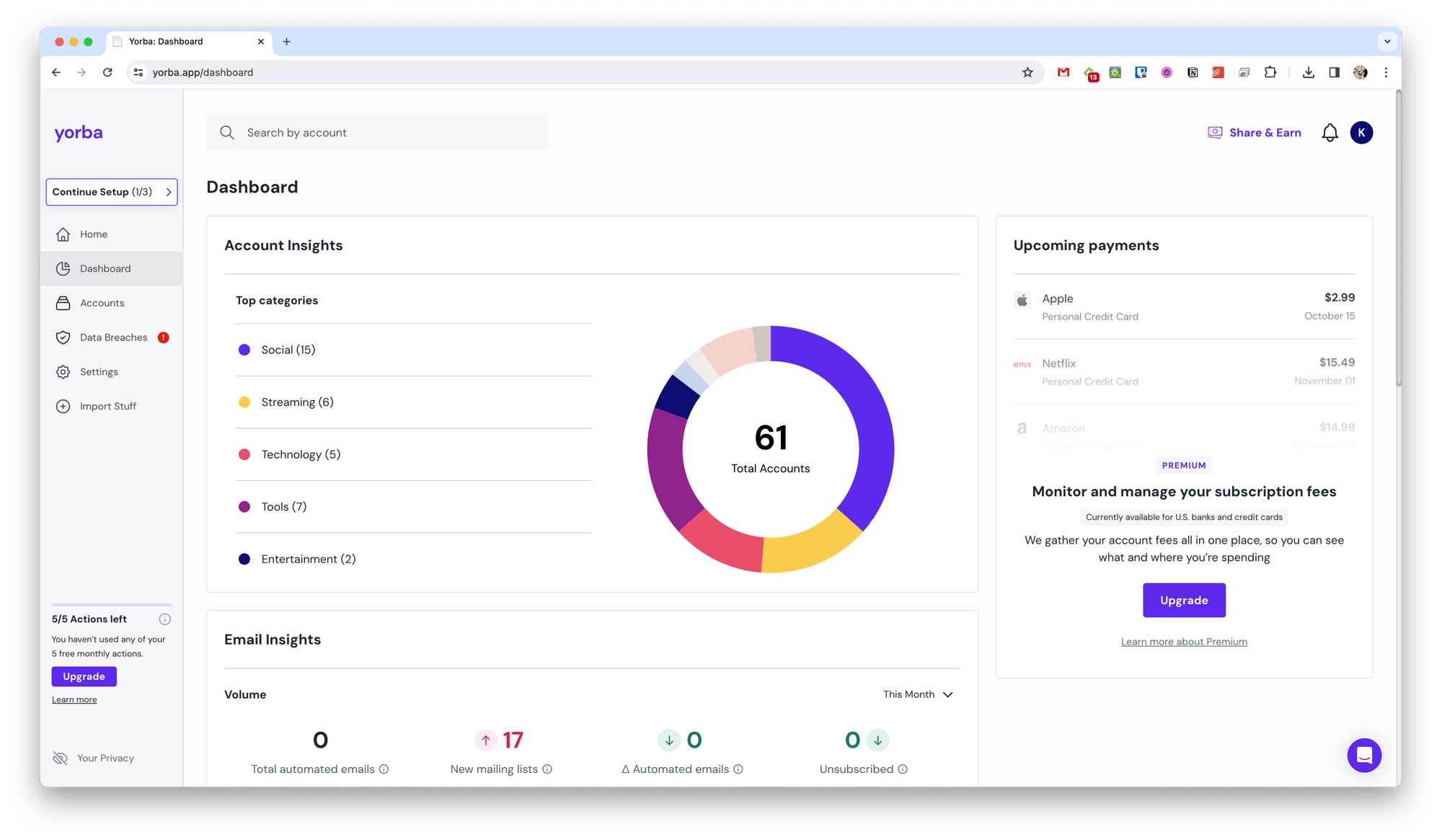
In the Data Breaches section, you can see which data has been compromised, read information about the breach, and take necessary actions.
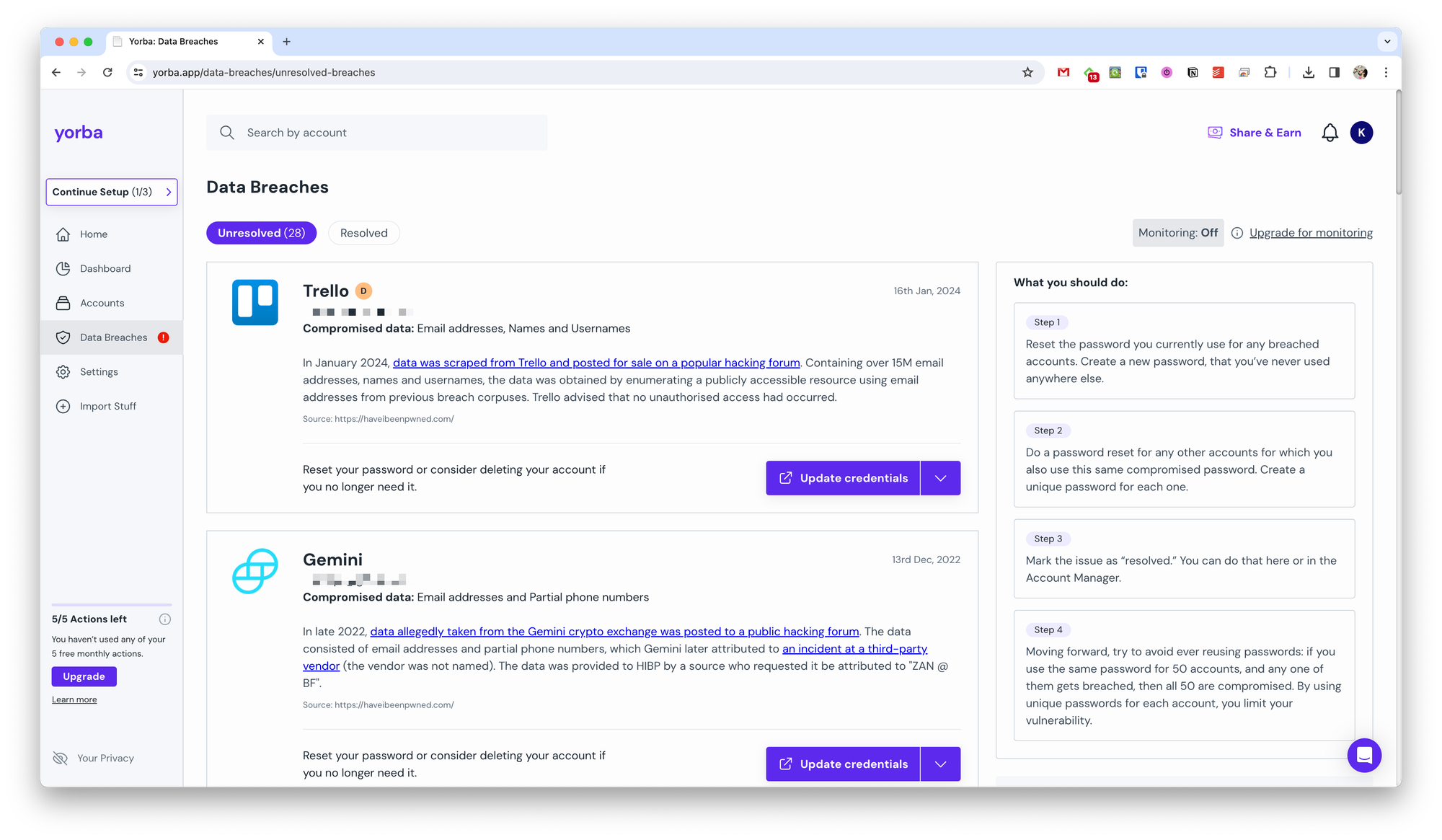
Cost
The basic plan (also free) doesn't differ much from the paid one at $8 per month and will cover your tasks quite well if you're not a US citizen. This is because all the features for analyzing paid service subscriptions are available only in the paid version. In addition, for money, automatic leak search and advanced capabilities for unsubscribing from newsletters and deleting accounts are provided.
Otherwise, there are no differences between the free or paid versions. Also, in the free version, you can only add five accounts. But I didn't understand what accounts were meant. If it's about the email addresses being scanned, then after adding three, the total number of remaining accounts still remained five. If in general about the found data, then I added 47 accounts, and no one asked me for money for it.
Conclusions
I'll be honest, initially I was skeptical about Yorba. Often such services are practically useless or are designed only for US residents. But even in the free version, this service can actually detect many of your accounts and provide some basic information about them.
It makes no sense to subscribe to a paid account if you don't need to track subscriptions or you don't hit the quantitative limit. Also, if your password manager can notify you of leaks, then Yorba may not be very useful for you. But if you use a password manager like Chrome or Apple and want to quickly unsubscribe from email newsletters, then you can give Yorba a try.
